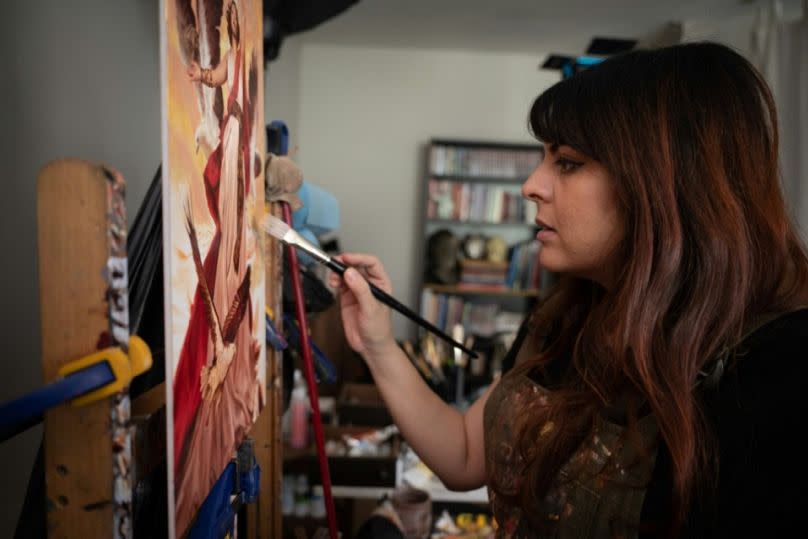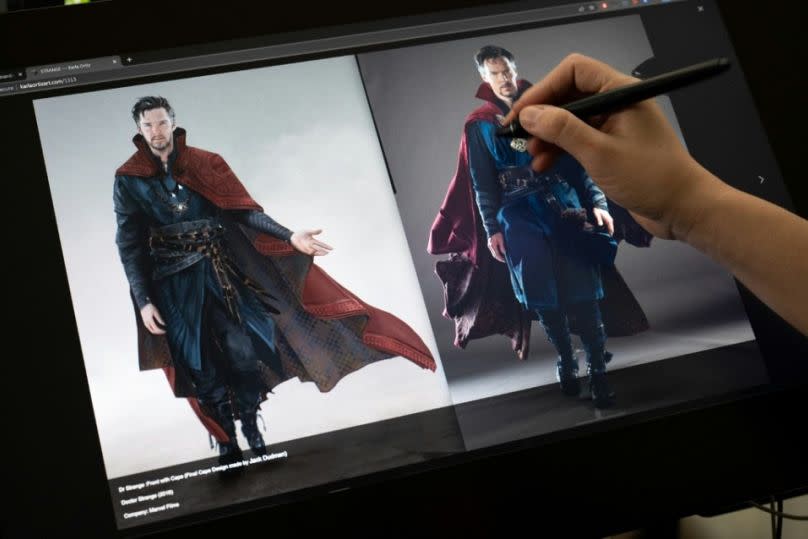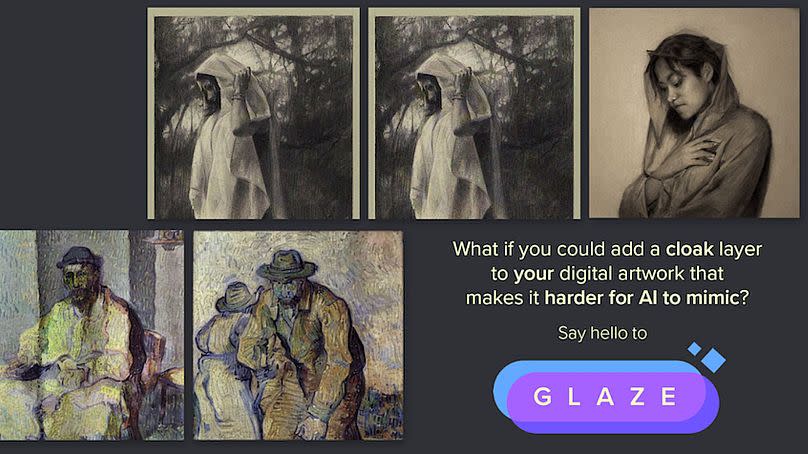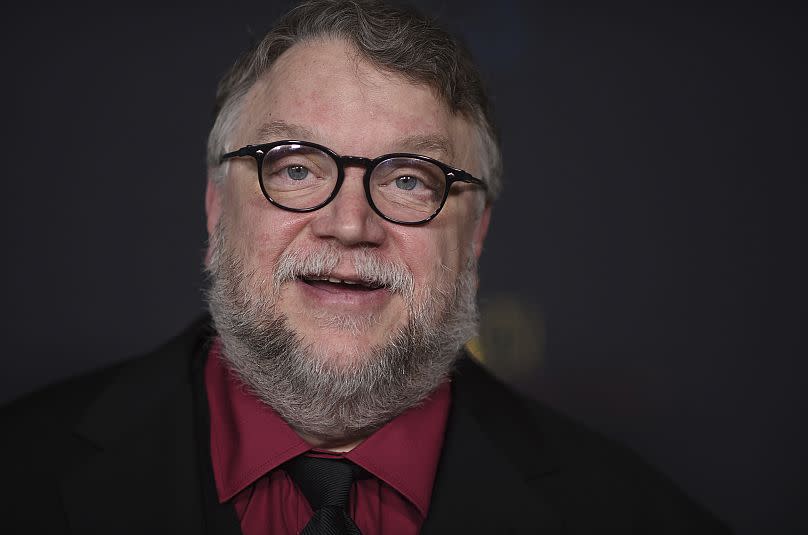From lawsuits to tech hacks: Here's how artists are fighting back against AI image generation
We're currently witnessing the rapid growth of AI-generated images, where the line between reality and fiction is becoming increasingly blurry.
With recent breakthroughs in image generation technology, the possibilities of what can be created seem endless, and the results are nothing short of fascinating - and at times, even terrifying.
Take, for instance, the recent viral image of Pope Francis, decked out in a stylish white puffer coat, which was generated entirely by artificial intelligence.
The image's realism was so convincing that it left many in disbelief and awe, blurring the line between what's real and what's not.
But the consequences for real-life artists are less amusing.
The advent of new of AI models, such as Midjourney and DALL·E, allow anyone to generate intricate and realistic images based on artworks found online in a matter of seconds, by simply typing a few words into a text box.
These advancements have left many artists concerned about their livelihoods, questioning why people would continue to pay for their creations when they can generate similar art themselves.
Additionally, these tools have sparked heated discussions regarding the ethics of AI-generated art and are met with resistance from individuals who believe that they are a technologically advanced form of plagiarism.
But artists are fighting back, using a range of tactics from legal action to IT hacks, in order to protect their creative output and secure their employment in the face of this new phenomenon.
How generative artist Tyler Hobbs blurs boundaries between machine and hand-made art
How AI is putting President Macron at the heart of the French pension protests
Reclaiming copyright and consent

A group of San Francisco artists, including cartoonist Sarah Andersen and illustrator Karla Ortiz, are taking legal action to reclaim copyright and consent by filing a class-action lawsuit against DreamUp, Midjourney, and Stable Diffusion.
Ortiz, a Puerto Rico native and California-based designer, who has worked for Ubisoft and Marvel Studios, has been deeply concerned about the impact of generative AI on artists for some time.
She discovered an open source AI-based image generating tool called Disco Diffusion about a year ago but soon realised that the program was using the work of many of her friends without their knowledge or consent.
Although she initially dismissed this as art theft, the introduction of even more powerful programs such as Midjourney and Stable Diffusion, which can generate images "in the style of" a chosen artist, brought the magnitude of the phenomenon to her attention.
"All of our work has been used to train the models, the datasets that these generative AI models use and they also utilise our full names to be able to generate imagery," explains Ortiz.
"But really, when you're an artist, your work is kind of like you, it feels like a weird identity theft almost. And, again, it's just, it's really upsetting," she adds.

Andersen, who has amassed over 4 million followers on Instagram for her playful cartoons, says she felt “violated” when first she saw an AI drawing that copied the style of her “Fangs” comic book work.
She fired off an indignant reaction on Twitter; it went viral, and other incensed artists reached out to her with stories of their own.
Backers of the lawsuit are demanding that AI creators should be forced to secure permission for works used in training software, with an option to remove it, and provide compensation to the original artists.
The lawsuit was filed in San Francisco by lawyer Matthew Butterick along with the Joseph Saveri Law Firm, the same team who are currently suing Microsoft, GitHub, and OpenAI for making Copilot available online without seeking permission.
"When science fiction imagines the AI apocalypse, it's something like robots coming over the hill with laser guns," Butterick says.
"I think the way AI defeats humanity is more where people just give up and don't want to create new things, and (it) sucks the life out of humanity," he adds.
Getty Images has also filed a lawsuit in London against Stability AI (the company behind Stable Diffusion), accusing them of illegally copying and processing millions of copyrighted images and their associated metadata to train its AI model.
How artists are turning to technology to defend their art

Artists are turning not just to the courts but also to technology to defend themselves against generative AI.
Prompted by demand, a team at the University of Chicago launched their free-to-use "Glaze" software last week to help protect original works.
The program adds a layer of data over images that, while invisible to the human eye, "acts as a decoy" for AI.
According to Shawn Shan, the doctoral student in charge of the project, if generative AI comes across an image that has been protected by Glaze, it will be unable to accurately analyse and replicate its style.
"AI has been evolving too fast, and there must be some guardrails or regulations around it," says Shan. "The goal of this is to push back from a technical standpoint."
Growing resistance to AI generated content around the world

The rise of AI image art has sparked a backlash across the globe.
In Japan, Netflix faced criticism from anime workers for using AI-generated background art in the short film, Dog and Boy.
Director Guillermo del Toro has called animation created with machines "an insult to life itself."
In the Netherlands, the Mauritshuis Museum displayed an AI-generated image inspired by Vermeer's "Girl With a Pearl Earring," which sparked controversy.
Moreover, the use of AI in art competitions has also caused a backlash, as seen with the Colorado State Fair's annual art competition, where an entrant won with an A.I.-generated piece. Despite the entrant's defence that they were transparent about the work's origins, the win still ignited a fierce debate amongst artists who accused him of cheating.
This incident has been noted in the lawsuit filed by the group of San Francisco artists
Copyright or fair use?
However, some people believe that this new technology can be used to inspire new forms of artistic expression and allow artists to push the boundaries of their creativity.
Stability AI (the company behind Stable Diffusion) founder and chief executive Emad Mostaque has portrayed generative software as a "tool" that can tend to "mundane image output" and provide new ways "of ideating for artists."
Mostaque contends that it will allow more people to become artists.
Critics disagree, stating that when a person prompts software to draw in the style of a master, it does not make that person an artist.
Companies defending themselves from artists' copyright claims are likely to claim "fair use," an exception sometimes allowed when a new spin is put on a creation or when it is only briefly excerpted.

